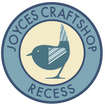What does the name Connemara mean?
The name Connemara is synonymous with many things,
The Galway hooker,
The Connemara Pony,
and Connemara Marble to name a very few! But where does the name Connemara come from?
In this blog I will explain the origins of the name Connemara and some other place names from the area.
Connemara is borderless region on the west coast of Ireland. The fact that there is no defined border means that the area of Connemara is relatively subjective. The most popular definition however holds that the village of Oughterard is the gateway to Connemara. The origin of this comes from the landowner Richard Martin (1754-1834). Martin owned Clareville house in Oughterard and this was the start or gateway of the 20 mile avenue to his Connemara residence Ballynahinch Castle. Killary fjord to the north is a natural border and the village of Spiddle on Galway bay is thought be the most easterly point of Connemara. Many would consider the Aran Islands to be part of Connemara though this could contested.
The easiest definition is that Connemara is more than border, it is a state of mind.
The main village of Connemara is Clifden (founded in 1812) with a population of around 1500.
So what does the name Connemara mean?
Connemara is a derivation of the the name Conmhaícne Mara. The Conmhaícne were an early Irish tribe who gave their name to as many as 10 different parts Ireland.
The name Conmhaícne is though to have come from an ancient ancestor Conmac, he was descended from Queen Medb (Maeve) of Connaught and her husband Ferghus mac Roich. The name Conmac translates as son of a hound (Con = hound, Mac = son)
The word ‘Mara’ is derived from the Irish word for sea ‘muir’. So Connemara can be translated as the Conmhaícne tribe by the sea.
The archeology of Connemara dates back 1000’s of years. There are fine examples of standing stones, stone alignments and tombs scattered all around. One of the finest pieces of archeology is St. Macdara’s church on the MacDara’s island 6km off the coast. St. Macadara is the patron saint of seafarers and is believed to have a built a wooden church on the island in the 6th century. This was replaced by the present stone church in the 10th century.
Translation of some Connemara placenames
English * Irish * Translation
Roundstone * Cloch na Rón * Seal's rock
Lettermore * Leitir Móir * Big rough hillside
Clifden * An Clochán * The stepping stones
Ballynahinch * Baile na hInse * The settlement of the Island
Renvyle * Rinn Mhaoile * Bald peninsula
Recess * Sraith Saileach * Stream of the sallyrods
Carraroe * An Cheathrú Rua * The red quarter
Kilkerren * Cill Chiaráin * The Church of Ciaran
Loughaconeera * Loch Conaortha * Lake of the shepherds hound
Muiceanachidirdhásháile * Muiceanach idir Dhá Sháile * Pig-marsh between two saltwaters
Rosmuc * Ros Muc * Headland of the pigs
Cleggan * An Cloigeann * The head or skull
Where do the Twelve Bens get there name?
The twelve bens mountain range dominates the centre of Connemara it is made up of 12 peaks
English * Irish * Translation
1 Benbaun * Binn Bhán * White Peak
2 BenCorr * Binn Chorr * Pointed Peak
3 Bencollaghduff * Binn Dubh * Peak of Black Hags
4 Ben breen * Binn Braoin * Braon's Peak
5 Derryclare * Binn Doire Chláir * Peak of Derryclare
6 Bengower * Binn Gabhar * Goats' Peak
7 Muckanaght * Muiceanach * Hill like a Pig
8 Benfree * Binn Fraoigh * Peak of the Heather
9 Bencullagh * An Chailleach * Peak of The Hag
10 Benbrack * Binn Bhreac * Speckled Peak
11 Benlettery * Binn Leitrí * Peak of the Wet Hillsides
12 Benglenisky * Binn Ghleann Uisce * Peak of the Glen of Water

The Twelve Bens is an anglicised translation of the Irish name “Na Beanna Beola”. The word ‘Beanna’ can translate as 'peaks', though it is sometimes translated as gable’s (like the gable of a house). Beola was an ancient Connemara King, so the name can translate as the gables of Beola. The name Beola can also be found in the village of 'Tuaim Beola', which translates as the tomb of Beola. This is where he is supposedly buried. Beola was a king of the ‘Fir Bolg’ tribe. There is a local Connemara story which states that King Beola fought in the great battle of Moytura, and that it was Beola with a war club of ‘wild mountain holly’ who severed the arm of The De Danaan King Nuada.
